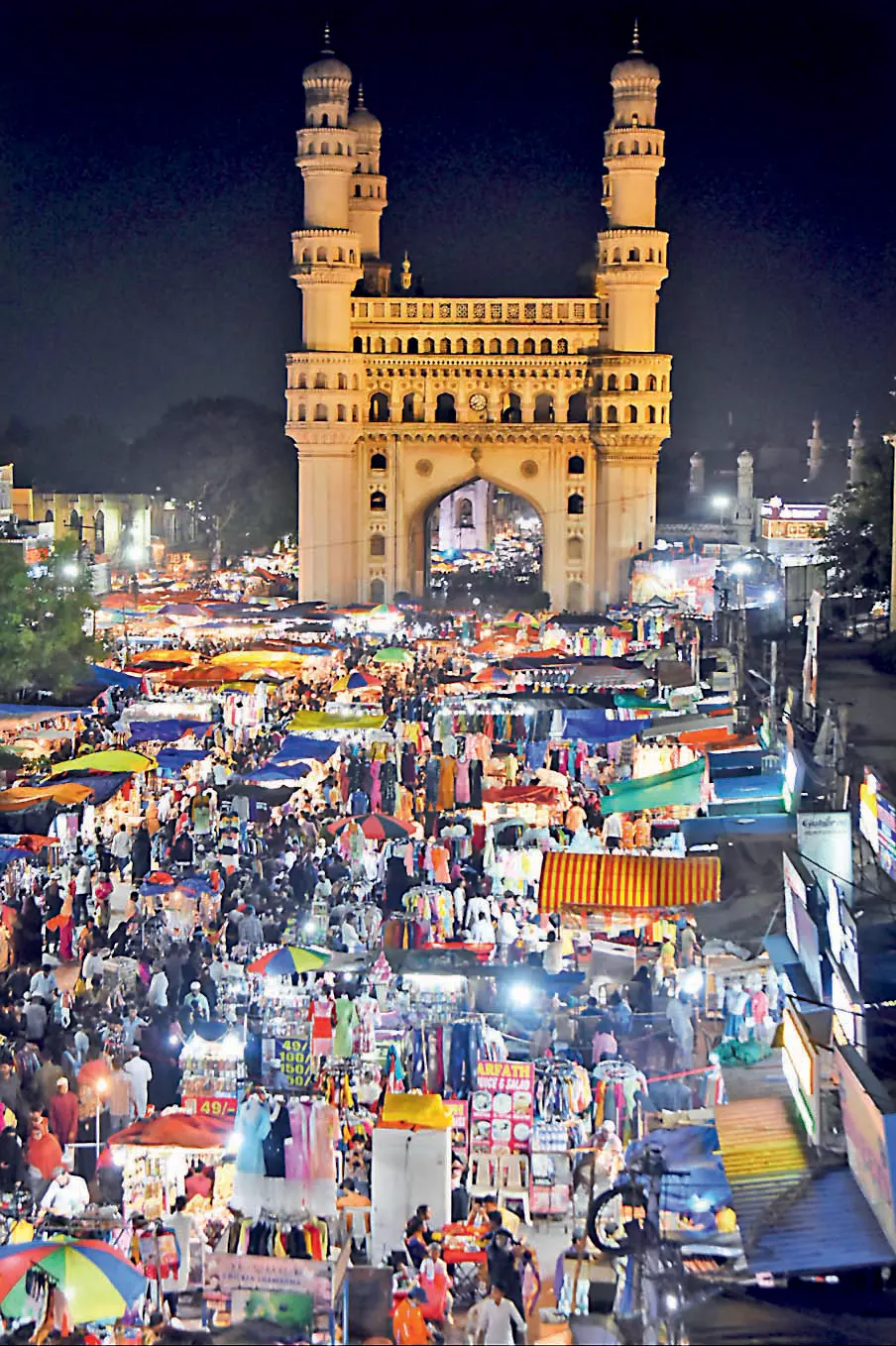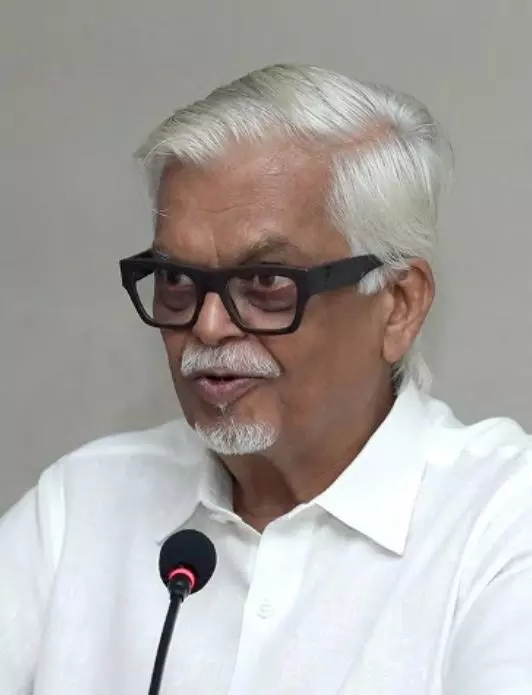Sanjaya Baru | Who built Hyderabad? Secret of the city’s rise

At a recent dinner for the head of a multinational firm visiting India the conversation turned to Hyderabad. We were a mixed group of Indians with varied professional and corporate backgrounds. Everyone agreed that the best places to invest were in the southern part of India. I asked the visiting American CEO if he had been to Hyderabad. He hadn’t. Must I, he enquired. You must, I replied. Hyderabad became the subject of an animated conversation over cocktails.
“So, who built Hyderabad?”, the American CEO asked. Before I could respond, one gentleman said: “There was this guy, the chief minister, Chandrababu Naidu?” A lady chimed in: “I think more recently it was due to this young man, KTR.”
Our American CEO asked his factotum if they had any investments in Hyderabad. Yes, said the factotum. The boss was pleased. I was afraid the conversation would drift towards some other topic as we nursed our drinks. It was time I declared my Hyderabadi roots and tell the group the full story.
Hyderabad, as they say about Rome, was not built in a day. The roots of the city’s development go far back into the period when the Nizam, Mir Osman Ali Khan, began establishing modern industrial units, a railway line that connected to British India, civic infrastructure, including public parks and green belts, and a university -- Osmania -- that matched the fame of the three big universities of early 20th century British India, namely, Calcutta, Bombay and Madras. Unlike the three port cities that
thrived due to European trade and commerce, Hyderabad was among the most prosperous landlocked cities of early 20th century India.
From the 1960s, successive governments focused on the city’s development. The turning point, however, was the mid-1970s when a development-oriented chief minister, J. Vengala Rao, took charge. He was followed by a varied set of political leaders that included M. Chenna Reddy, N.T. Rama Rao, N. Chandrababu Naidu, Y.S. Rajasekhara Reddy and K. Chandrasekhar Rao. The secret of Hyderabad’s rise is that each one of them built on an inherited foundation. The state’s integration into
the erstwhile state of Andhra Pradesh brought in enterprise and capital from the Krishna and Godavari delta regions. The political turmoil in the Calcutta of the 1960s and 1970s attracted many Marwari business families to move base to Hyderabad. The Birlas were among the first to arrive.
Even before private enterprise arrived and Vengala Rao took charge of the state’s development, several public sector enterprises had been based in Hyderabad. They in turn spawned thousands of ancillary units, opening space for small scale private enterprise. If Hyderabad benefited in the era of public sector led industrialisation, it continued to benefit after the 1980s when industrial development began to be private sector led. In the late 1990s, Business Today magazine invited me to write about the emergence of Hyderabad as a business centre.
The information technology boom and the establishment of Infosys and Wipro in Bengaluru shifted the focus to Hyderabad’s neighbour and competitor. That is when N. Chandrababu Naidu stepped in, established software parks and created Cyberabad. This was the post-industrial phase of Hyderabad’s development. In 2006, the Centre for Economic and Social Studies (Hyderabad) invited me to deliver the Waheeduddin Khan Memorial Lecture, in memory of the institute’s first director. I chose to explore “the local and the global” factors that contributed to Hyderabad’s development. (https://www.epw.in/journal/2007/43/perspectives/local-and-global-hyderabads-development.html)
If Vengala Rao promoted industrial development and Chandrababu Naidu established the IT and IT-enabled businesses, it was left to Y.S. Rajasekhara Reddy and the then Union urban development minister S. Jaipal Reddy to create the public infrastructure needed to allow the city to become a metropolis. The Nehru Outer Ring Road was their joint project. By linking the ORR to the newly-built airport, two successive governments ensured that the newly developed extensions of Hyderabad would not get caught in the traffic snarls that bedevil Bengaluru. The construction of the new airport at Shamshabad by G.M. Rao was a far-sighted decision that has served the city and the region well.
It is to the credit of K.T. Rama Rao that after the division of the state into Andhra Pradesh and Telangana, the new government in Hyderabad protected the city’s development. In his initial and misplaced enthusiasm, chief minister K. Chandrashekhar Rao threatened to conduct a census and weed out the “Andhras” from Hyderabad.
His son KTR had the sense to hold his father back and reassure investors that Hyderabad would continue to develop as India’s “Second Capital”, an idea first promoted by Jawaharlal Nehru. Historically, Hyderabad has always been welcoming of the “outsider”, given that the Nizam’s kingdom spanned Telugu, Marathi and Kannada speaking regions. The city also attracted Kayasthas and Punjabis from the north, Marwaris and Gujeratis from the west and Tamils from the south. If Hyderabad is today emerging as a major and modern metropolis it is because successive governments have built on the legacy of predecessors.
There are, however, two major drawbacks that need to be addressed. First, the shrinking of the green cover. Hyderabad was known as a city of gardens. In fact, in the controversy around its name one interpretation has always been that the urban settlement around the river Musi was known as “Baghnagar” -- the city of gardens. Hyderabad needs to protect its existing green spaces and create more. Second, Hyderabad has to protect, renovate and restore old buildings and preserve the beauty of its architecture. Time was when tourists from around the world visited the Arts College building on the Osmania University campus to merely see it. With the decline of the university, its buildings too have declined. Osmania was once a great university. Today it is an apology for a centre of learning and research.
Both Chandrababu Naidu and KCR are said to have lost power because they focused too much attention on Hyderabad’s development, eyeing the lucrative real estate opportunities, and neglected rural Telangana. The Revanth Reddy government seeks to restore balance to the state’s development. However, in promoting rural development and farmers’ welfare, the government should not neglect the further development of Hyderabad and other urban centres.

